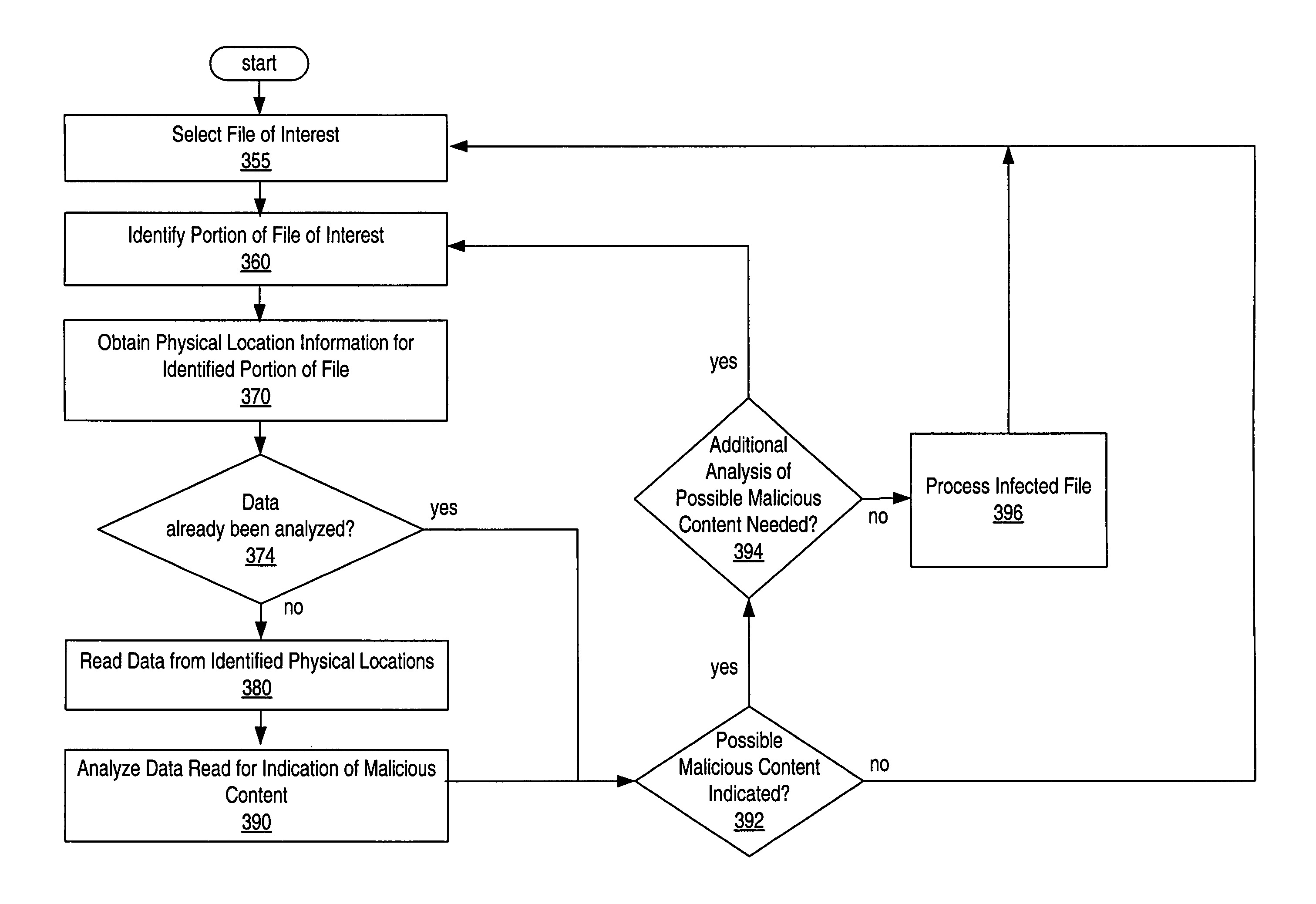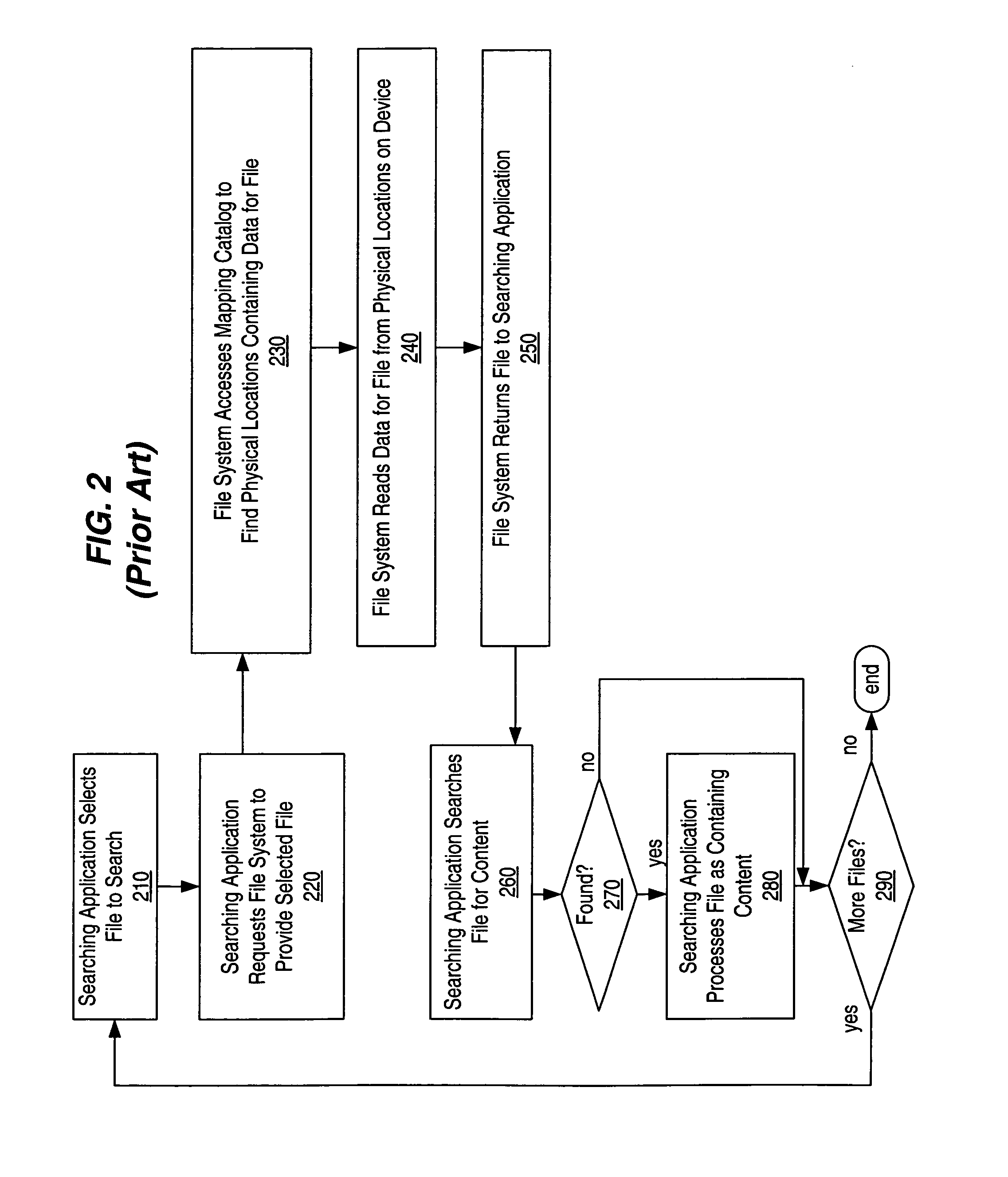File-system-independent malicious content detection
a file system and malicious content technology, applied in the field of data storage, can solve the problems of affecting the time and resources required, service comes at a cost, and is unavailable or unreliable for us
- Summary
- Abstract
- Description
- Claims
- Application Information
AI Technical Summary
Problems solved by technology
Method used
Image
Examples
Embodiment Construction
FIG. 1 shows an example of file data stored on a storage device 110. File data like that shown in FIG. 1 can be scanned by scanning programs (e.g., a detection program, a pattern detecting program, or the like). Such scanning programs read and scan all or part of a file in order to come to some conclusion about the file (e.g., a conclusion as to whether a file contains a particular pattern or malicious content). A scanning program reads a file in a prespecified order (e.g., as specified by an algorithm), which can include linear scanning, scanning parts of the file in execution order, and the like.
A detection program is a type of scanning program that processes a file in order to determine whether a malicious content is present within the file. Examples of malicious content include a virus, trojan, root kit, or other type of malicious content that is unauthorized and / or likely to disrupt desired system operation. For simplicity, the below examples describe how a detection program ca...
PUM
 Login to View More
Login to View More Abstract
Description
Claims
Application Information
 Login to View More
Login to View More - R&D
- Intellectual Property
- Life Sciences
- Materials
- Tech Scout
- Unparalleled Data Quality
- Higher Quality Content
- 60% Fewer Hallucinations
Browse by: Latest US Patents, China's latest patents, Technical Efficacy Thesaurus, Application Domain, Technology Topic, Popular Technical Reports.
© 2025 PatSnap. All rights reserved.Legal|Privacy policy|Modern Slavery Act Transparency Statement|Sitemap|About US| Contact US: help@patsnap.com



